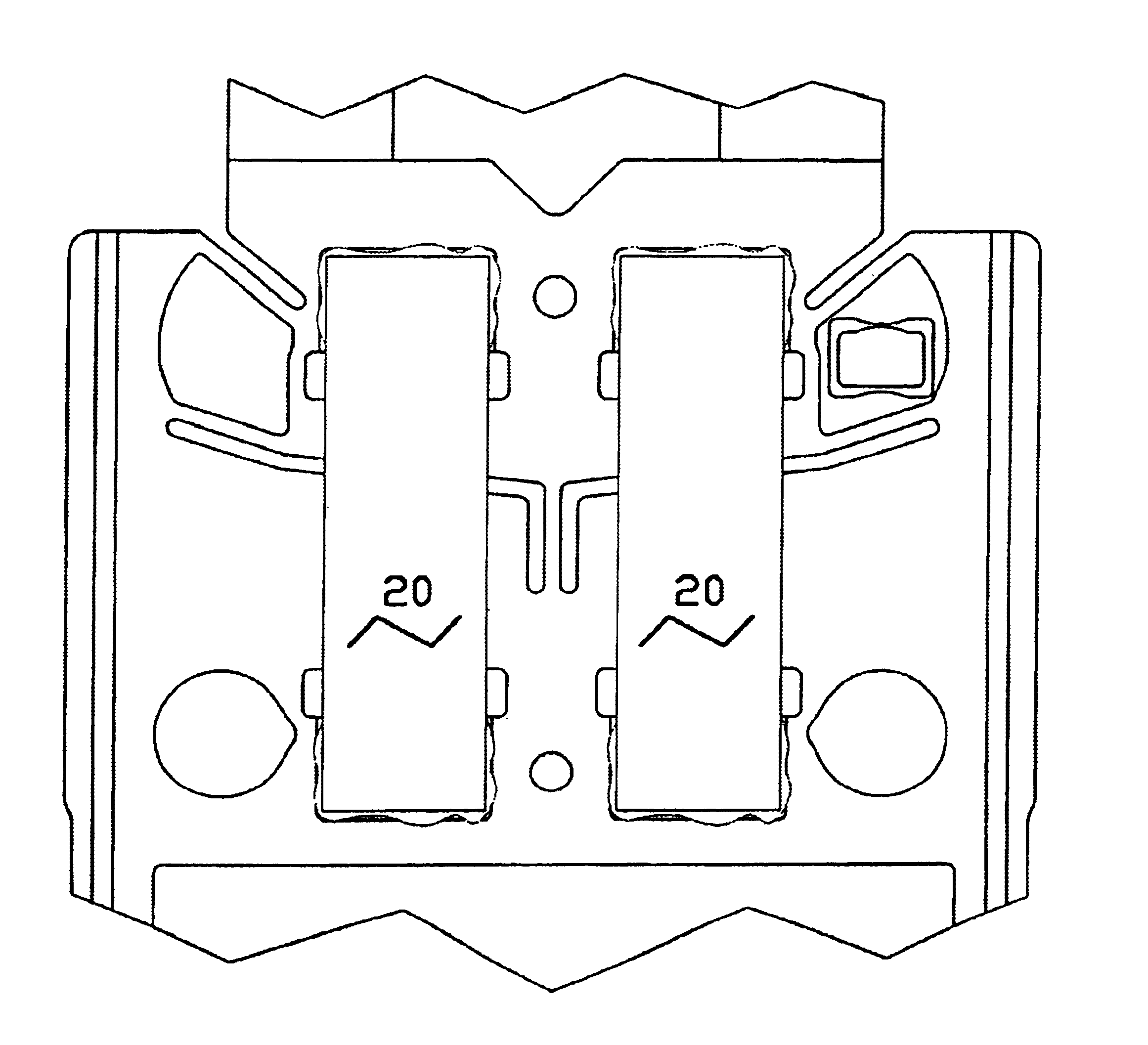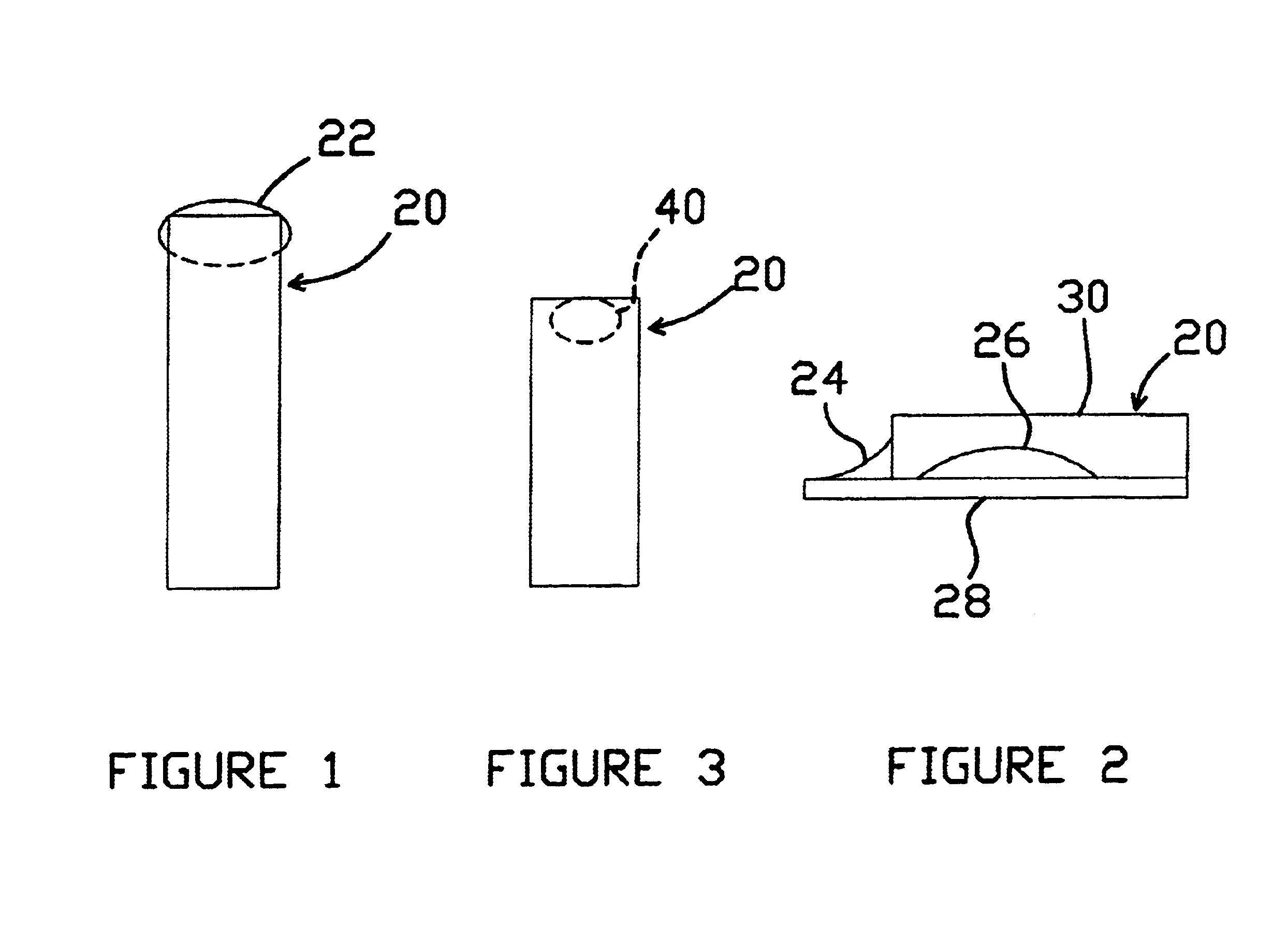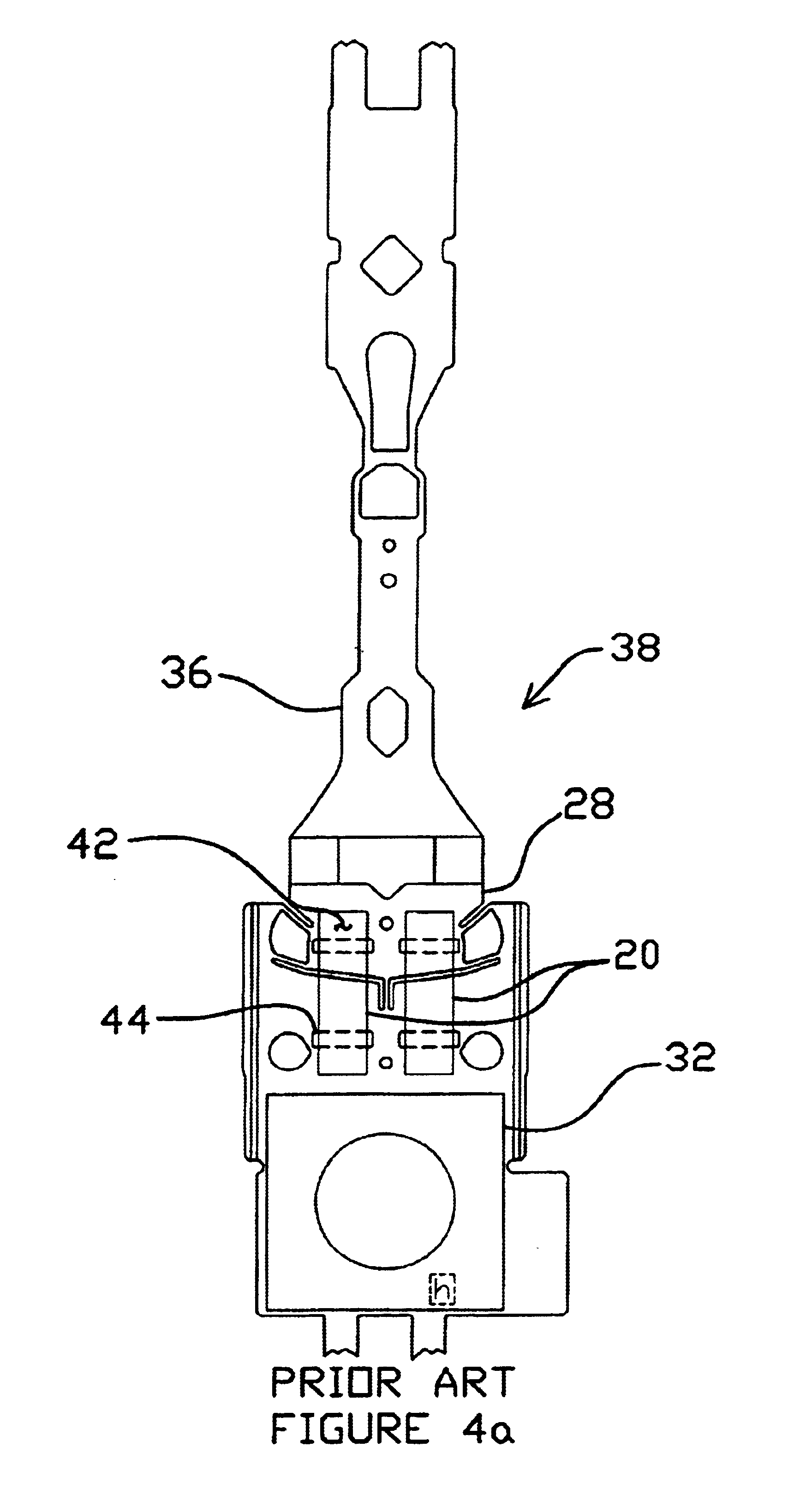Enhancements for adhesive attachment of piezoelectric motor elements to a disk drive suspension
a piezoelectric motor and adhesive technology, applied in piezoelectric/electrostrictive/magnetostrictive devices, piezoelectric/electrostriction/magnetostriction machines, electrical apparatus, etc., can solve the problems of increasing the number of rejectable fillets, increasing the number of incomplete bond pads, and increasing the number of fillets. , to achieve the effect of improving the filling of adhesive, improving the bond strength, and improving the thickness
- Summary
- Abstract
- Description
- Claims
- Application Information
AI Technical Summary
Benefits of technology
Problems solved by technology
Method used
Image
Examples
Embodiment Construction
Referring to FIGS. 1, 2 and 3, the drawings show possible extremes of adhesive dot size and shape that can occur without adhesive attachment enhancements. FIG. 1 is a simplified top view of a PZT 20 which shows a large adhesive volume 22 that spreads out on the stainless steel suspension 28. This causes large adhesive fillets 24, 26 as shown in FIG. 2, which is a side view of the PZT and adhesive of FIG. 1. These fillets make the PZT to stainless joint stronger but if they are large enough, they can short the stainless steel 28 to the plated conducting top surface 30 of the PZT 20. This shorting problem causes the motor 20 to become inoperative. Referring now also to FIG. 4c, if the adhesive 34 spreads from the motor 20 all the way to a base plate 32, the relative movement of the base plate 32 to the suspension 28 could cause adhesive particles to be flaked off, resulting in contamination in the drive. The load beam 36 (formed of a load beam blank 38) of the suspension 28 is essenti...
PUM
 Login to View More
Login to View More Abstract
Description
Claims
Application Information
 Login to View More
Login to View More - R&D
- Intellectual Property
- Life Sciences
- Materials
- Tech Scout
- Unparalleled Data Quality
- Higher Quality Content
- 60% Fewer Hallucinations
Browse by: Latest US Patents, China's latest patents, Technical Efficacy Thesaurus, Application Domain, Technology Topic, Popular Technical Reports.
© 2025 PatSnap. All rights reserved.Legal|Privacy policy|Modern Slavery Act Transparency Statement|Sitemap|About US| Contact US: help@patsnap.com



